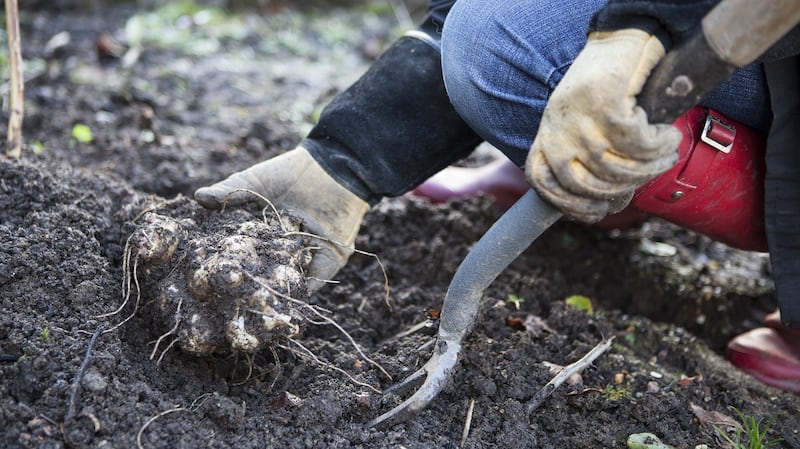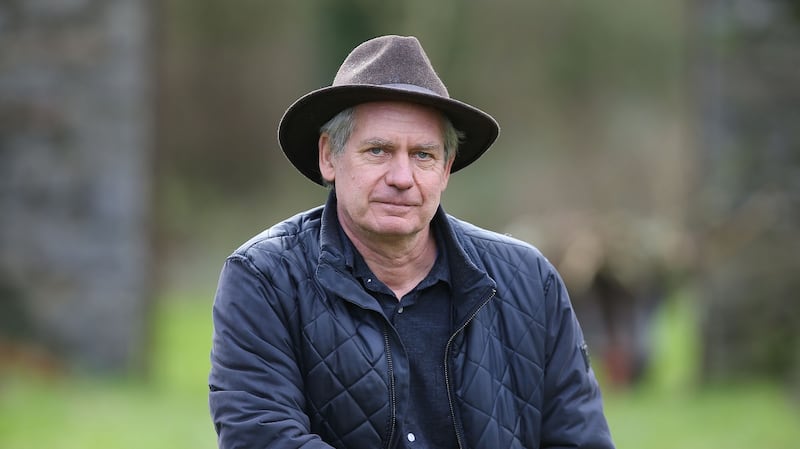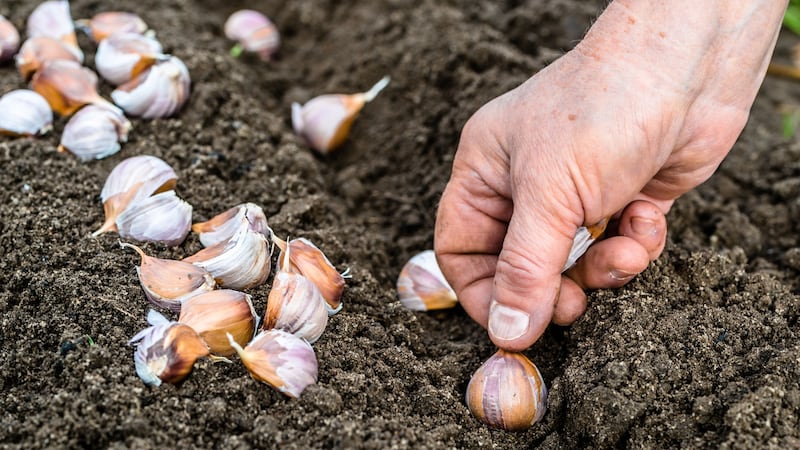More than three decades after the 1986 Chernobyl nuclear disaster sent a cloud of radioactive dust drifting across Europe, Klaus Laitenberger can still vividly recall the world's sense of shock and horror.
“I really think it changed me as a person. It certainly opened my eyes to the fact that change was needed on a global level if something like that wasn’t to happen again . . .”
Since 1999, the west of Ireland has been home to this German-born organic gardener and author, who lives in rural Leitrim with his wife Joanna and their family.
In normal times he's a very busy man combining his work as an inspector for the certification body known as the Organic Trust while somehow also carving out time for his consultancy work, popular garden talks and workshops as well as for Green Vegetable Seeds, the small, independent seed company that he runs with his wife.
So busy, in fact, that when the pandemic hit Ireland last spring, his diary for the entire year was already fully booked.
“Every day of it, almost every minute. And then suddenly everything was cancelled . . . I was so used to working flat out that at first I struggled to know what to do until I realised that it was the perfect time to write another book.”
Laitenberger is already well known in Ireland as the author of several books on kitchen gardening, especially Vegetables for the Irish Garden which since its publication in 2010 has become the kitchen gardening bible for a generation of home growers.
Getting the timing right when it comes to sowing and planting is so important
Penned during last year’s lockdowns and self-published earlier this month, his new book The Self Sufficient Garden explores that theme in even greater depth and is jam-packed with the kind of practical, dirt-under-the-fingernails advice that has won him legions of loyal fans.
At the heart of this genial gardener's very hands-on, down-to-earth, planet-friendly approach to vegetable growing is his lifelong interest in environmentalism and the ecology movement (he singles out the work of pioneering environmentalists and activists such as Zach Bush, Helen Norberg-Hodge and Charles Eisenstein for particular mention). So self-sufficiency is a subject very close to his heart.
“Ireland has changed so much in that regard since I first came here to live. There’s so much more respect for gardening as a profession, for example, as well as a real interest in issues such as sustainability and biodiversity. Through my work I’m now meeting so many young growers and market gardeners that are passionate about what they do and who are committed to nurturing the local economy movement, which is wonderful to see.
“I think Covid-19 has also really accelerated that change by giving people the opportunity to reflect upon the things that really matter, to really appreciate the essentials of life, the simple things that we can take for granted like good food, good, clean water and fresh air. Growing some of your own food is a great way to reconnect to that.”
Given the title of his new book, what would he say to those who’d argue that self-sufficiency is an unattainable ideal for many gardeners, especially those living in cities with limited growing space and busy professional and personal lives?
“Of course the degree of self-sufficiency is going to depend on your growing space, how much time you want to give it and how intensively it’s used, which is why I’ve included plenty of detail in the book about crop plans and sowing schedules for three very different sized plots.”

He says a lot of people will be amazed by what can be produced in even a small space with limited time given to it.
“For example, for the smallest sample garden featured in my book – measuring just 50 square metres – I’ve focused on the production of high-value fresh crops such as lettuce, salad leaves, spinach, chard, kale, beetroot, leeks, radishes, courgettes and fresh herbs.
“The second, which measures 100m sq, is designed for the gardener who is happy to put in 4-5 hours work a week plus a few extra days in spring. Its crop plan includes a lot of more staple vegetables such as potatoes, garlic, carrots and parsnips.
“Finally, the third and largest sample garden in the book is 400m sq, which includes a 90m sq polytunnel. Designed as a completely self-sufficient vegetable garden, this makes it a more serious undertaking in terms of the time and gardening skills required. My experience is that it’s this sort of very practical, hand-on information and advice that kitchen gardeners are really looking for.”
If Laitenberger could distil his wisdom and many years of experience as an organic grower into just a handful of bullet points, what would come top of the list?
“That good soil preparation and respect for the soil is crucial. That using the stale-seedbed technique and hoeing on a dry, sunny day will always be a far more effective and time-efficient way of controlling weeds than hand-weeding.

“That the use of modern crop-protection fabrics such as Bionet or Enviromesh are brilliant ways to protect plants from pest-damage as well as from wind and cold. That choosing the best, most suitable varieties, which includes many modern F1 types that have been specifically bred for productivity, disease resistance and vigour, is crucial.
“Lastly, that getting the timing right when it comes to sowing and planting is so important. Do it too early and you’re just creating lots of problems for yourself down the line.”
His own vegetable garden isn’t at his Leitrim home. Situated close to the edges of Lough Melvin, his three-acre family garden is naturally prone to seasonal flooding. It is instead on an allotment in Glór na Mara Community Garden in nearby Bundoran, a project run by the Sisters of Mercy that he’s been involved with for many years.
“I go there once a week during the growing season to tend to it.”
Of the many vegetables that he grows for himself and his family, which is his favourite? Jerusalem artichokes is the surprising answer.
“It’s just such an amazing vegetable. High yielding, easy-to-grow, incredibly nutritious, packed full of health-boosting properties. I make a delicious soup out of it almost every day. Last year we trialled some of the different varieties in a lovely old Regency walled garden in Kilkenny where I’m doing some consultancy work. They’re all great but Gigante came out tops in terms of its huge yields.”
In fact, so enamoured is he with this sweet, nutty, knobbly root vegetable (which is not actually a true artichoke but a species of sunflower, Helianthus tuberosus) that Laitenberger says he might even write a book about it.
“I’m not sure if there’s an audience out there for it,” he laughs. “But maybe one day . . .”
The Self-Sufficient Garden by Klaus Laitenberger (€14.95, Milkwood Farm Publishing) is available to order online from greenvegetableseeds.com as well as from selected Irish bookshops.

This Week in the Garden . . .
So long as the ground isn’t frozen or waterlogged, this is a good time of the year to sow garlic cloves. Gently break the bulbs up into individual cloves and sow these (pointy tip up and roughly twice their depth) in rows into a fertile, weed-free, free-draining, not recently manured soil. Sow in a position in full sun where other members of the allium family haven’t been grown recently, spacing the cloves 20cm apart with 25cm between rows.
Sow sweet pea seed under cover, placing the containers in a cool, bright, frost-free spot and making sure to protect them against rodents (I cover them in a cage of fine garden netting) and slugs.
The young plants can then be transplanted into their final growing position in the garden or allotment from mid-March. Sweet pea needs a cool, rich, moisture-retentive but free-draining soil and some form of sturdy support to climb up.
Recommended seed suppliers include seedaholic.com. mrmiddleton.com and all good Irish garden centres.














